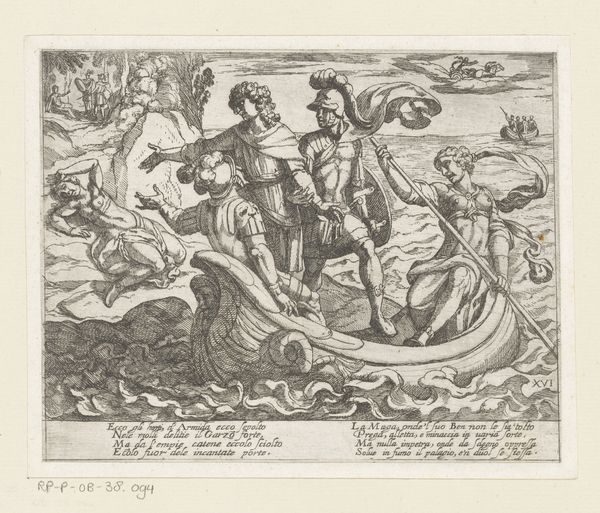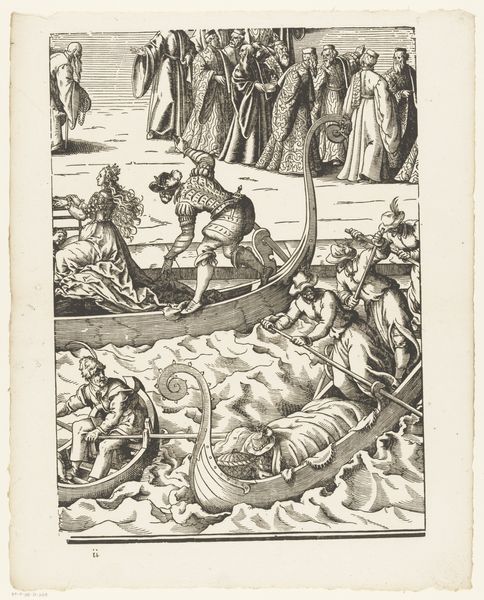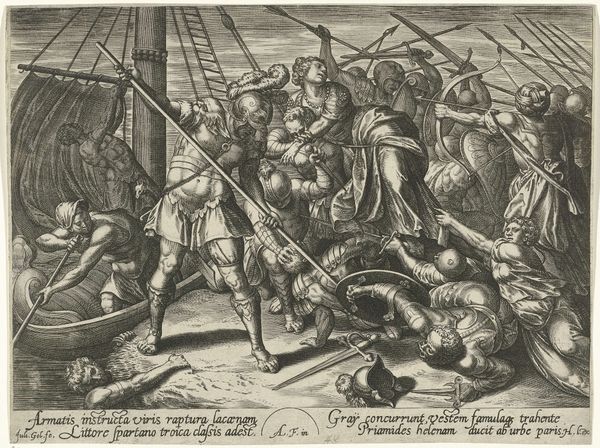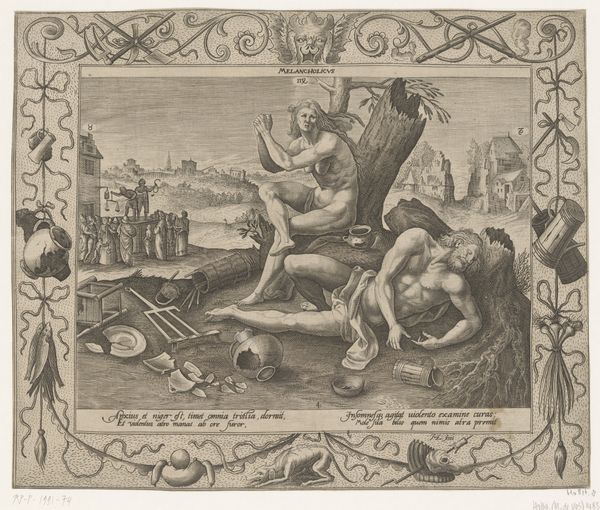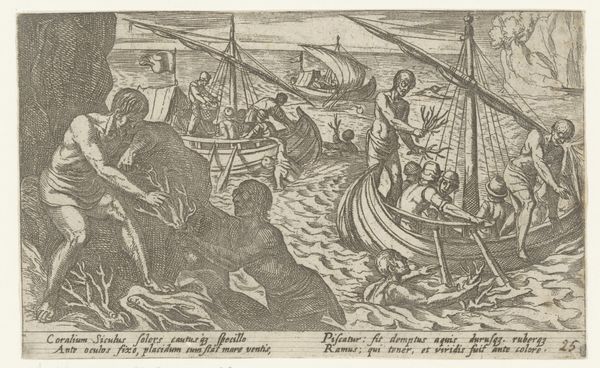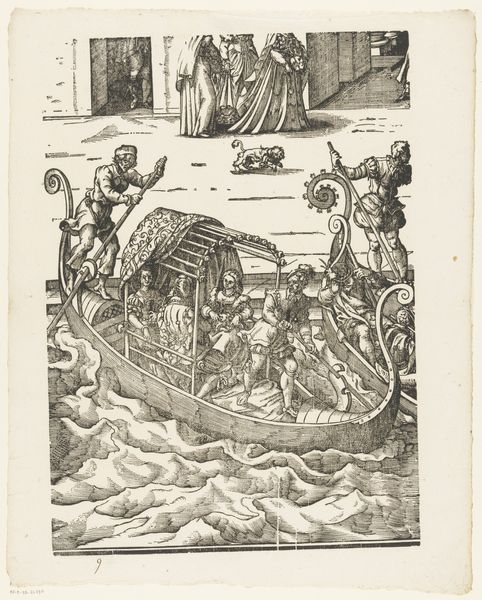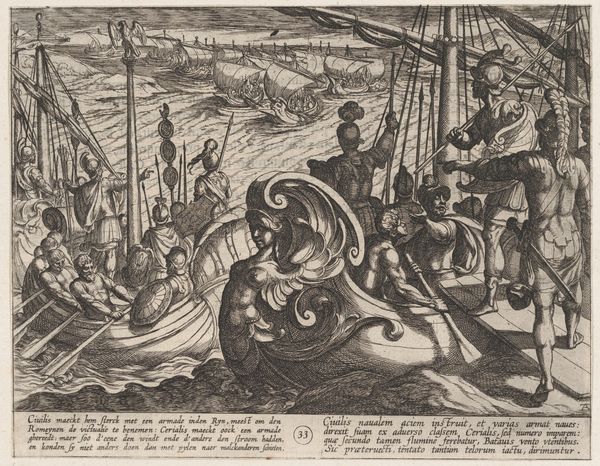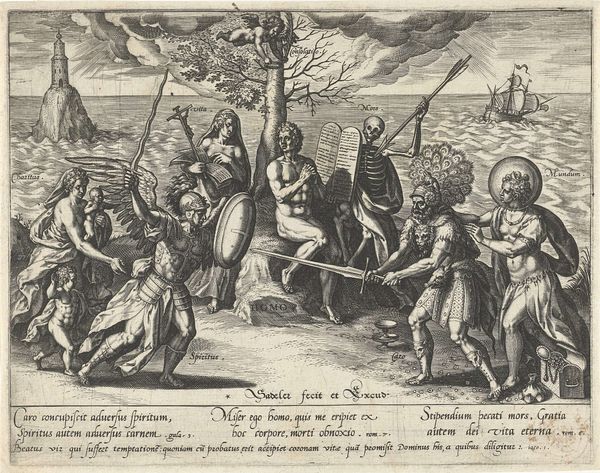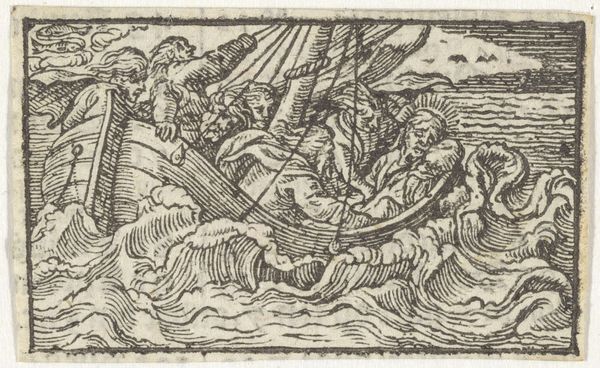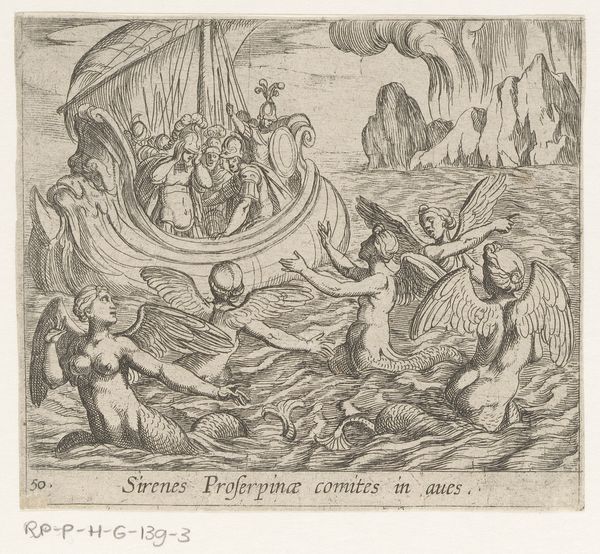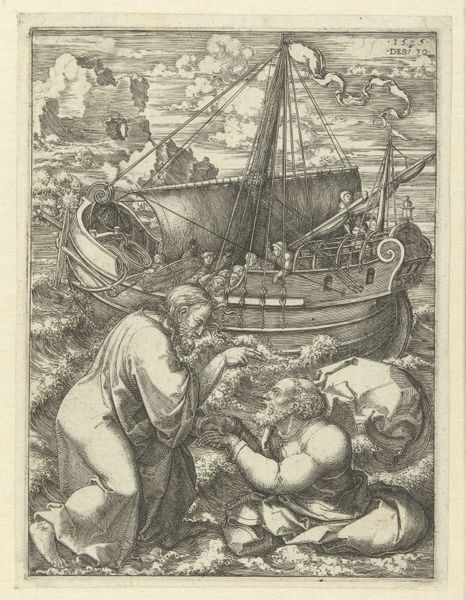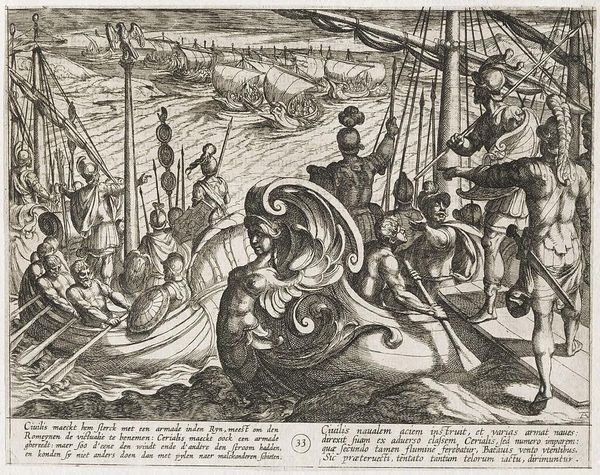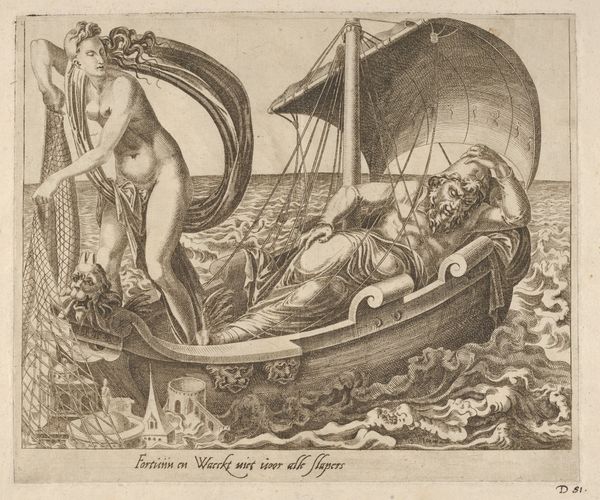
Plate 29: Bacchus Changing his Kidnappers into Monsters (Tyrrheni nautae in Dlephinos), from Ovid's 'Metamorphoses' 1606
0:00
0:00
drawing, print, engraving
#
drawing
#
narrative-art
#
baroque
# print
#
figuration
#
history-painting
#
italian-renaissance
#
engraving
Dimensions: Sheet: 3 15/16 × 4 9/16 in. (10 × 11.6 cm)
Copyright: Public Domain
Curator: Ah, yes, this print, dating back to 1606, is titled 'Plate 29: Bacchus Changing his Kidnappers into Monsters (Tyrrheni nautae in Dlephinos), from Ovid's 'Metamorphoses''. It was realized by Antonio Tempesta, an Italian artist of the late Renaissance/early Baroque. What strikes you about it initially? Editor: Chaos, delightfully rendered! It feels like a fever dream caught in ink. The composition is swirling, like the sea itself is alive and angry, about to swallow everyone. There's such theatrical drama! Curator: Indeed, it encapsulates the drama inherent in Ovid's narrative. Observe how Tempesta employs tight, dense lines to create a sense of claustrophobia and impending doom as Bacchus exacts his divine retribution on the hapless sailors. Notice the specific animal transformations. Editor: Yes, those dolphins! There’s a surreal beauty to them, even as the sailors contort into these monstrous forms. And what about Bacchus himself? He seems oddly serene amidst all the pandemonium, a sort of detached ringleader. Curator: He represents the irresistible force of nature, untamed and unforgiving. The dolphin, in Roman and Greek symbology, often represented salvation, rescue from the sea. But here, ironically, it signifies transformation, imprisonment, and horror. Bacchus' placement of the hand as if controlling and pointing direction feels powerful and assertive. Editor: So the sailors thought they were in charge, kidnapping a seemingly innocent boy, but really, they were dancing to his tune all along! I imagine the surprise when scales started forming! Is that a lion standing right beside him? Curator: It appears to be. Lions frequently attend Bacchus and may act as guides and protectors. I am curious if the specific symbolism was rooted in regional practices in Italian communities or a nod towards similar earlier depictions of mythological animalistic transformations. Editor: I love that the wildness of the myth crashes into the controlled, almost scientific style of engraving. Curator: The narrative is indeed perfectly suited to the Baroque sensibility. Editor: It's a wild ride, isn't it? You start looking at it, and suddenly you are being pulled into a dark, watery world. Curator: It certainly offers a fascinating, if chilling, glimpse into the moral consequences of hubris.
Comments
No comments
Be the first to comment and join the conversation on the ultimate creative platform.
